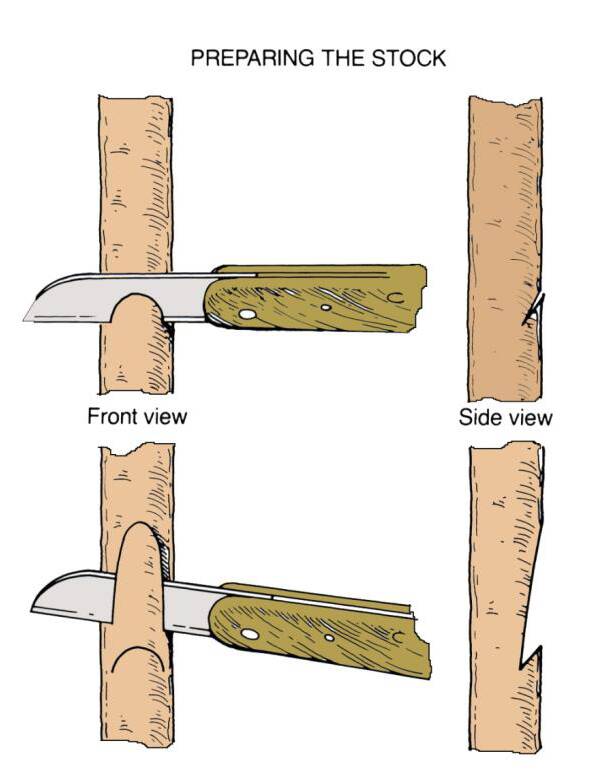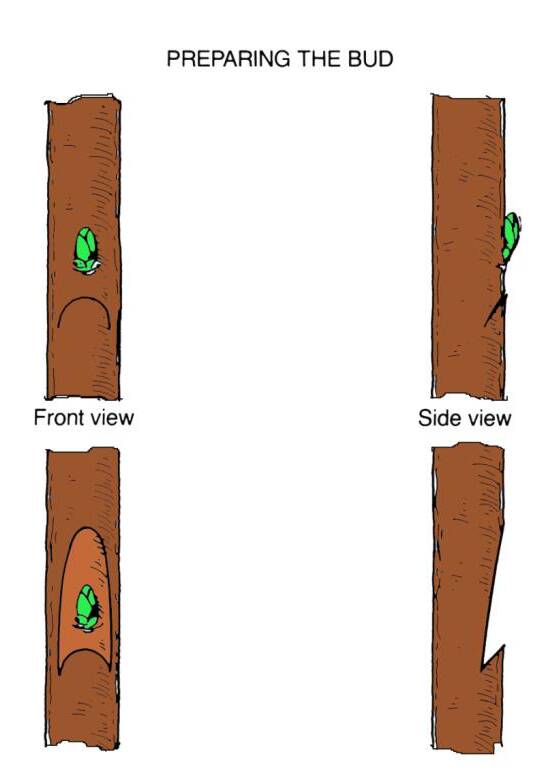Chip budding differs from T-budding because it can be done when the bark of the rootstock is not slipping. It has gradually become the most common form of budding for many ornamental and fruit tree species.
It is done in the summer when the buds are dormant but the rootstocks are active.
Chip budding results in greater grafting success and straighter trunks.

The rootstock is prepared by making a downward 45 degree cut followed by a second downward cut to form the "chip" shape.


Cutting the rootstock

First downward cut in rootstock.

Second downward cut.

Rootstock ready to have bud inserted.
Cutting scion bud



The scion chip is made the same way and inserted into the rootstock and wrapped.


The chip is wrapped completely with a rubber of plastic grafting wraps.

Inserting the chip bud.



Wrapping the chip bud.



Click on the button below to see Bench Chip Budding video.
Field budding is a team effort with each group member specializing in either budding or tying.

Budding starts with rubbing off the lower leaves on the rootstock.

The first team member buds and the second follows to wrap.
Grafting trolleys can be used to support and can be as simple as two connected wheels.


More elaborate grafting trolleys have four wheels, storage capacity, and shade.


Click on the button below to see chip bud grafting video.
Rows of completed chip buds.


After budding plants in the field, the tops of the rootstock must be taken off.
This can be accomplished in two steps. First, most of the top is removed mechanically with a field driven corn chopper in early spring.


Then, after the bud begins to grow, the rest of the rootstock is removed above the bud. Illustrated to the right is a hydraulic pruner that reduces the strain on workers pruning acres of trees.

Healed bud

Hand pruning

Pneumatic pruner
Shoot growth begins from the inserted bud in the spring.

Roses

Paw paw
The objective of producing shade trees from budding is to get a straight trunk without an obvious bend in the trunk where the chip bud was inserted. This is accomplished by training the developing bud with "grow straights" that forces the developing stem upright.




